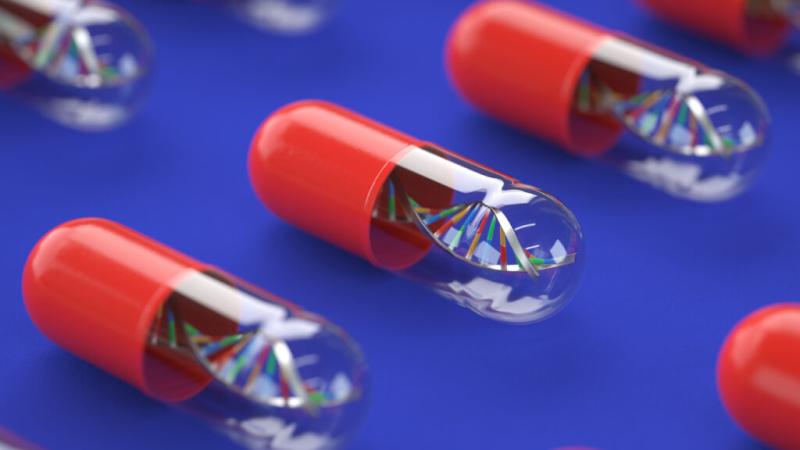What are Antisense Oligonucleotides?
Antisense oligonucleotides (ASOs) are short, synthetic, chemically modified strands of nucleic acids that are used to modulate gene expression by binding to target messenger RNA (mRNA) through complementary base pairing. The binding inhibits or modulates the expression of specific genes, thereby regulating the production of disease-causing proteins. ASOs were first proposed as a therapeutic approach in the late 1970s but have advanced significantly in recent years due to improved chemistries, delivery methods, and understanding of RNA biology.
Mechanism of Action
ASOs work by binding to their target mRNA through Watson-Crick base pairing. Depending on the type of antisense oligonucleotides used, this binding can then activate or inhibit critical steps in gene expression. Most commonly used ASOs are designed to induce RNase H-mediated degradation of the mRNA target. RNase H is an endogenous endonuclease that is activated upon binding of an ASO/RNA duplex and cleaves the RNA strand, leading to reduced levels of the target mRNA and consequently lower production of the encoded protein. Other ASO mechanisms involve steric hindrance blocking of pre-mRNA splicing or translational machinery, leading to exon skipping or inhibiting translation respectively. Well-designed ASOs can selectively regulate expression of one gene among thousands to obtain a therapeutic effect.
Potential Applications
Due to their high specificity and versatility, Antisense Oligonucleotides represent a promising strategy for treating various genetic disorders caused by loss-of-function or gain-of-function mutations. Some key areas where ASOs are being evaluated include Duchenne muscular dystrophy, hereditary transthyretin amyloidosis, Huntington's disease, myotonic dystrophy, and familial hypercholesterolemia. In Duchenne muscular dystrophy, exon-skipping ASOs help restore the reading frame of the dystrophin transcript to allow production of a partially functional protein. In hereditary transthyretin amyloidosis, ASOs reduce synthesis of the pathogenic transthyretin protein. Several ASO drugs have now received regulatory approvals, demonstrating the clinical potential of this approach.
Challenges and Ongoing Advancements
Despite recent progress, some hurdles still need to be overcome for broader therapeutic application of antisense oligonucleotides. One challenge is efficient delivery to target tissues - ASOs have difficulty crossing cell membranes on their own. Various formulations using lipid- or polymer-based nanoparticles are being developed and tested to improve pharmacokinetics. Immunogenicity is another concern, as unmodified ASOs can elicit immune responses limiting their therapeutic window. Chemical modifications to the backbone and bases have enhanced tolerability. Specificity also needs optimization - off-target gene regulation through partial base-pairing can cause undesirable effects. Computational tools are improving ASO design to maximize on-target binding. Lastly, repeat administration may be required which necessitates safe and consistent dosing regimens. Overall, continued innovation in ASO technology holds promise to expand treatment options for currently untreatable genetic conditions.
Advancing ASO Approaches in Clinical Trials
With ongoing progress in delivery methods and design, multiple ASO drugs are now approved or in advanced stages of clinical research. Some representative examples include:
- Volanesorsen (Waylivra) developed by Ionis Pharmaceuticals for familial chylomicronemia syndrome received FDA approval in 2018. It reduces synthesis of apolipoprotein C-III to lower blood triglyceride levels.
- Inotersen (Tegsedi) developed for hereditary transthyretin amyloidosis was approved by the FDA in 2018 based on positive Phase 3 trial results demonstrating reduced neuropathy progression.
- Golodirsen developed for Duchenne muscular dystrophy showed meaningful Forest improvement in muscle function in Phase 3 trials. If approved it would be the first disease modifying treatment for DMD.
- Tofersen is in Phase 3 studies for treating amyotrophic lateral sclerosis caused by mutations in superoxide dismutase 1 gene. Preliminary results indicate significant slowing of disease progression.
- Ionis also has several other antisense oligonucleotides candidates targeting various genetic diseases in late phase clinical testing including hereditary angioedema and Huntington's disease.
With a strong pipeline and demonstrated clinical efficacy, ASOs are poised to revolutionize treatment of many devastating genetic disorders currently lacking good therapeutic options. Continued innovations and trials will help realize their full potential.
Get More Insights on antisense oligonucleotides
For Better Understanding, Choose your preferred language-
About Author-
Money Singh is a seasoned content writer with over four years of experience in the market research sector. Known for her strong SEO background, she skillfully blends SEO strategies with insightful content. Her expertise spans various industries, including food and beverages, biotechnology, chemical and materials, defense and aerospace, consumer goods, etc. (https://www.linkedin.com/in/money-singh-590844163)
